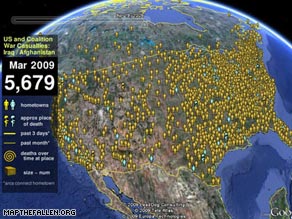Thanks to Doug for sending me this one. I had no idea that this kind of DIY was going on, but it makes sense. And where as I am sure there are most that only wish to do good, there is always the one percent of one percent that will use this for some evil stuff if they could.
I guess the concern I would have, is for these closet Frankensteins to actually get good enough at their hobby to be interesting enough for terrorists or criminal elements to kidnap or extort. Or these hackers simplify the concepts and procedures, and make it easy for enemies to DIY. I would be very curious to see who is reading the blogs and websites that these guys are conversing on and I would bet that the blog and others like it get high traffic, and from some very obscure places in the world. –Matt
——————————————————————
In Attics and Closets, ‘Biohackers’ Discover Their Inner Frankenstein
Using Mail-Order DNA and Iguana Heaters, Hobbyists Brew New Life Forms; Is It Risky?
MAY 13, 2009
By JEANNE WHALEN
In Massachusetts, a young woman makes genetically modified E. coli in a closet she converted into a home lab. A part-time DJ in Berkeley, Calif., works in his attic to cultivate viruses extracted from sewage. In Seattle, a grad-school dropout wants to breed algae in a personal biology lab.
These hobbyists represent a growing strain of geekdom known as biohacking, in which do-it-yourselfers tinker with the building blocks of life in the comfort of their own homes. Some of them buy DNA online, then fiddle with it in hopes of curing diseases or finding new biofuels.
But are biohackers a threat to national security?
That was the question lurking behind a phone call that Katherine Aull got earlier this year. Ms. Aull, 23 years old, is designing a customized E. coli in the closet of her Cambridge, Mass., apartment, hoping to help with cancer research.
She’s got a DNA “thermocycler” bought on eBay for $59, and an incubator made by combining a styrofoam box with a heating device meant for an iguana cage. A few months ago, she talked about her hobby on DIY Bio, a Web site frequented by biohackers, and her work was noted in New Scientist magazine.
That’s when the phone rang. A man saying he was doing research for the U.S. government called with a few polite, pointed questions: How did she build that lab? Did she know other people creating new life forms at home?
The caller said the agency he represented is “used to thinking about rogue states and threats from that,” recalls Ms. Aull, a recent Massachusetts Institute of Technology graduate.
(more…)
